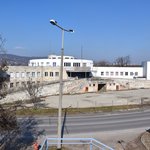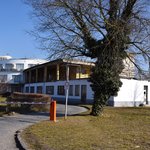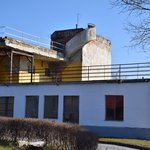When the airport was planned in 1935, Budaörs had not yet been incorporated into Budapest. However, the airport is organically orientated towards the capital. The construction started in 1936 and was finished on 20 June 1937. Today it is the oldest surviving international airport in Hungary. In 1936 a seperate competition was started to built the hangar next to the round hall. The construction was done by the two engineers László Czakó and György Méhes. It was back than the biggest hangar in Eurpope and still exists.
At no point is the airport's developer explicitly named. As Malert, Hungary's largest airline at the time, relocated its base to Budaörs, they do not appear to have been the main client. The opening was celebrated by the Hungarian state, so it was probably the Hungarian state that commissioned the construction of the airport.
Because the runway was unpaved and too short, construction of Ferihegy Airport (today Ferenc Liszt International Airport), later to become the main airport in Budapest, began as early as 1939.
During World War II the other airports in Budpaest were destroyed and only Budaörs could be used. Ferihegy became Budapest's main airport in 1950. This meant that after 14 years this airport lost its international character and agricultural and sports flights were carried out at Budaörs, today private aviation.
The airport's round hall is a listed building.





















